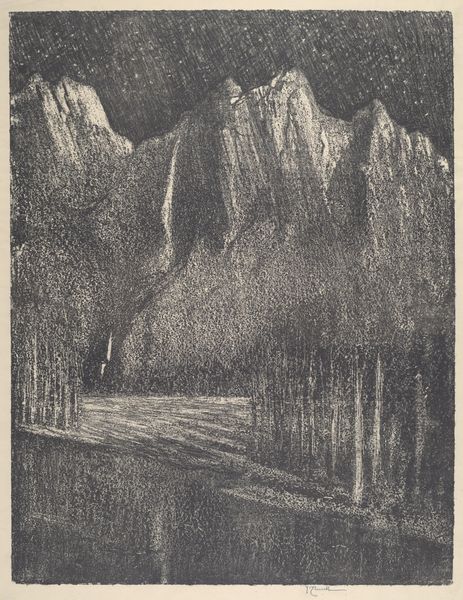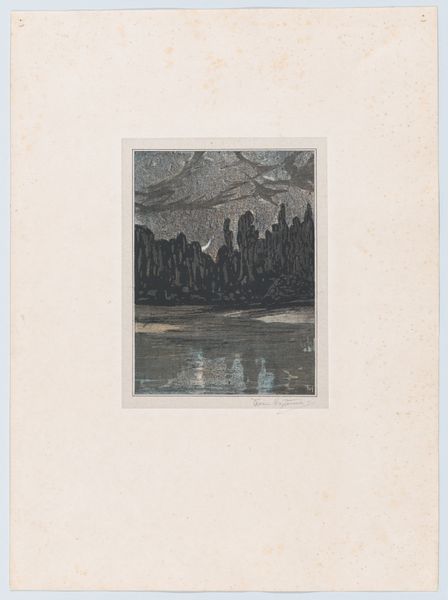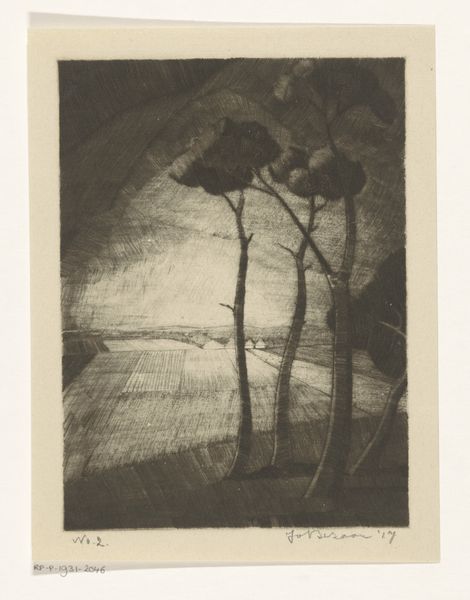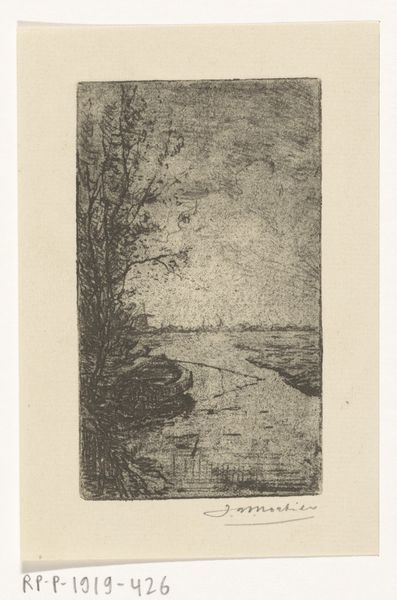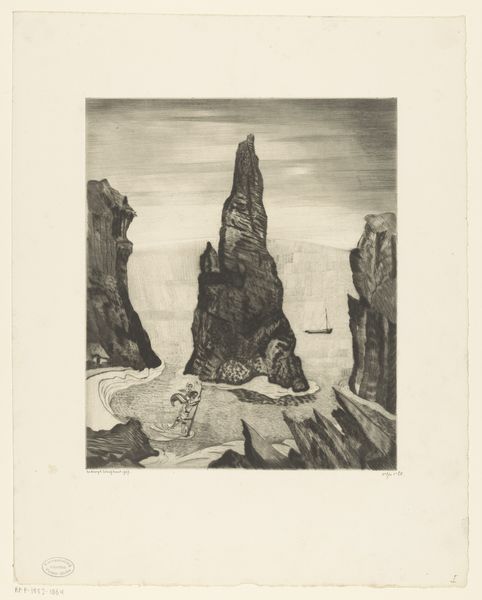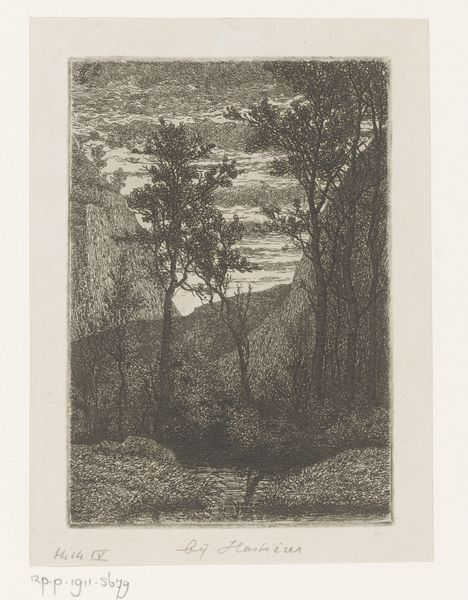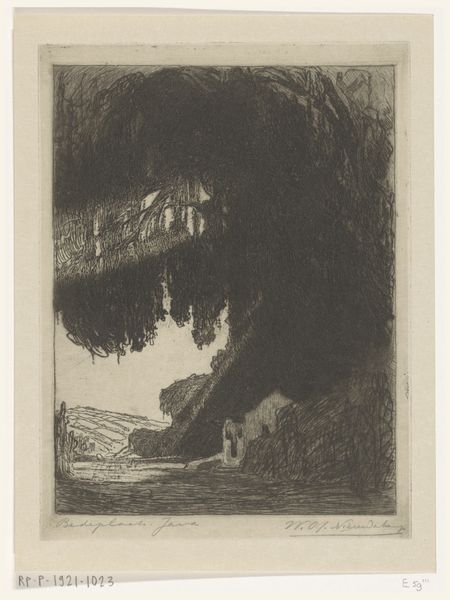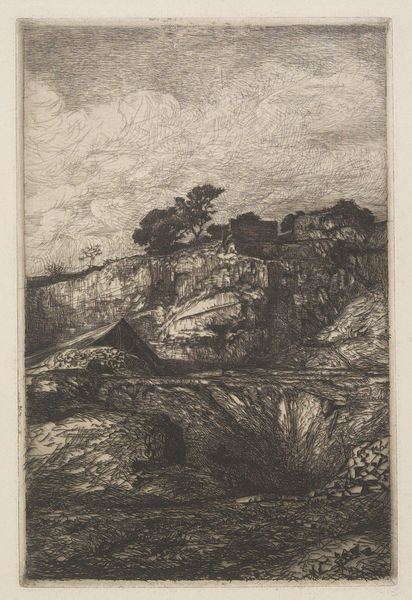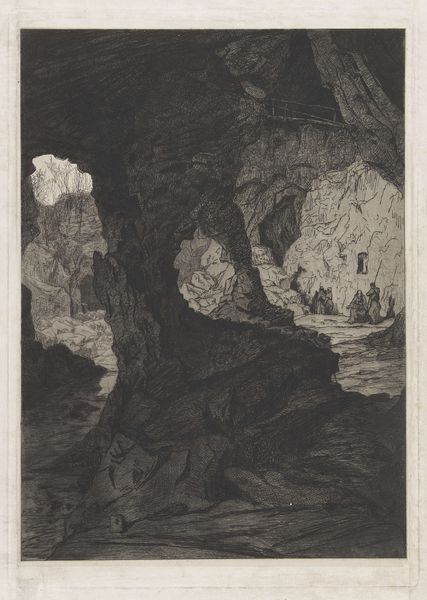
drawing, print, paper, ink
#
night
#
drawing
# print
#
landscape
#
bird
#
paper
#
ink
#
symbolism
#
post-impressionism
#
watercolor
Dimensions: height 221 mm, width 169 mm, height 426 mm, width 302 mm
Copyright: Rijks Museum: Open Domain
Editor: Here we have Theo van Hoytema’s "Nachtelijk landschap met trekvogels," or "Night Landscape with Migratory Birds," created sometime between 1878 and 1907. It's a drawing and print on paper, using ink and what appears to be watercolor. There’s a dreamy quality to it. What strikes you about this piece? Curator: It's interesting to consider this landscape in terms of its production. The fact that it is both drawing *and* print opens up questions about originality and reproducibility in art. How does the combination of handmade marks with printmaking techniques impact its perceived value? Editor: That's a great point. It blurs the line between a unique piece and something more mass-produced. How does that tension inform our understanding of it? Curator: Precisely! Consider the context: late 19th century. Printmaking allowed for wider distribution of images. Was Hoytema aiming for accessibility? And look at the paper itself – its quality, its source. The materiality tells a story about the resources available and the artist's intended audience. The means of production dictate who gets to consume it, and in what form. Does this connect to ideas of the working class or the everyman? Editor: That's really helpful. Thinking about the paper and the printing process adds so many layers that I hadn't considered. Curator: Exactly! It moves beyond just seeing a pretty picture. The ‘how’ and ‘why’ it was made are just as important as the ‘what’ in understanding its artistic intention and social impact. By focusing on these questions about labour and distribution, we consider a deeper reading. Editor: I see how looking at the materials and production gives so much more insight into the work’s role in society and its creator’s objectives. Thank you!
Comments
No comments
Be the first to comment and join the conversation on the ultimate creative platform.
